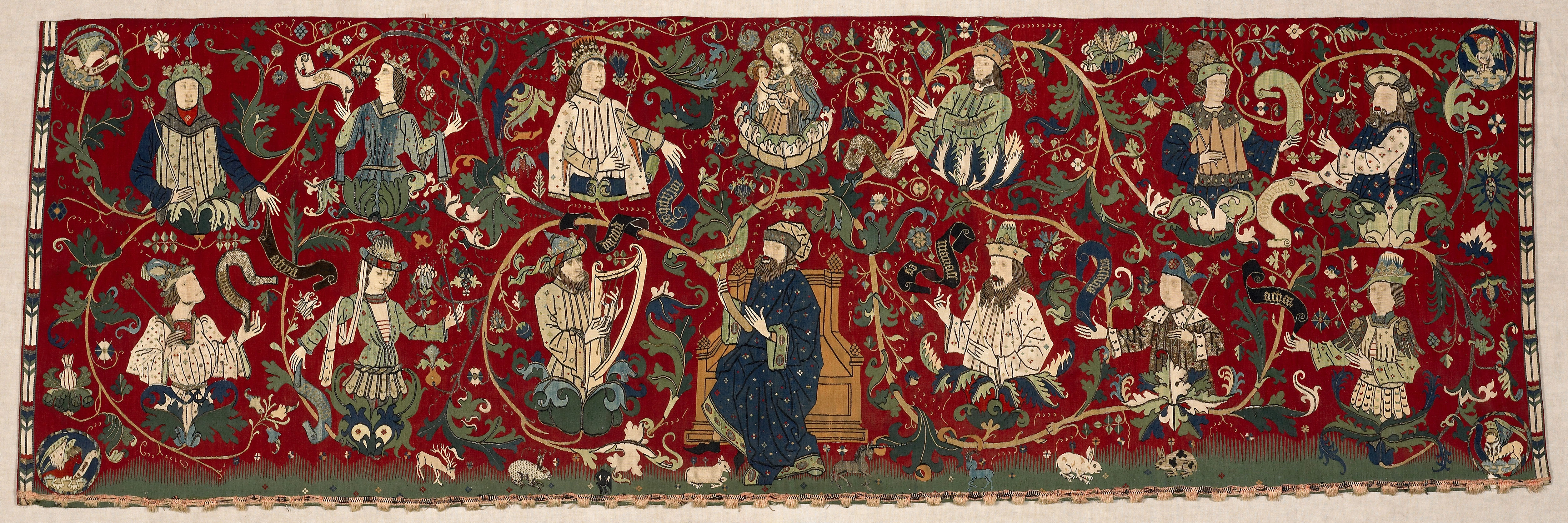
Title: Altar frontal with the Tree of Jesse
Place: Rhineland area of Germany
Date: 1470s
Medium & technique: Woven tapestry with linen, wool, silk and metal threads, and hand-painted details
Dimensions: 650 x 2047 mm
Themes: Global – Local
Collection: (c) the Whitworth, The University of Manchester
This textile decorated the front of an altar. It shows a number of Christ’s ancestors starting with Jesse, the father of King David, arranged in a ‘family tree’ known as a Tree of Jesse. It was based on a passage in the Old Testament’s Book of Isaiah: ‘A shoot will come up from the stump of Jesse; from his roots a branch will bear fruit’ (Isaiah 11:1) that foretold the coming of Christ. The closely woven tapestry includes Jesse sitting in the middle of the lower register of two, with a half-length Virgin and Christ-Child above him. To each side of these two central images are half-length male figures contained in flower calyces. They are identified individually in scrolls as the twelve kings of Israel, named in the Gospel of Matthew. The genealogical links are represented by curling vine-like tendrils winding around and connecting the figures. The family tree of Christ would have reminded those approaching the altar of the importance of belonging to the religious family and, conversely, the dangers of remaining outside. Read more about this object.
Anne Kirkham, University of Manchester
Further Reading:
Christiane Klapisch-Zuber, ‘The Genesis of the Family Tree,’ I Tatti Studies in the Italian Renaissance 4 (1991), 105-29.
Arthur Watson, The Early Iconography of the Tree of Jesse (Oxford: Oxford University Press, 1934).